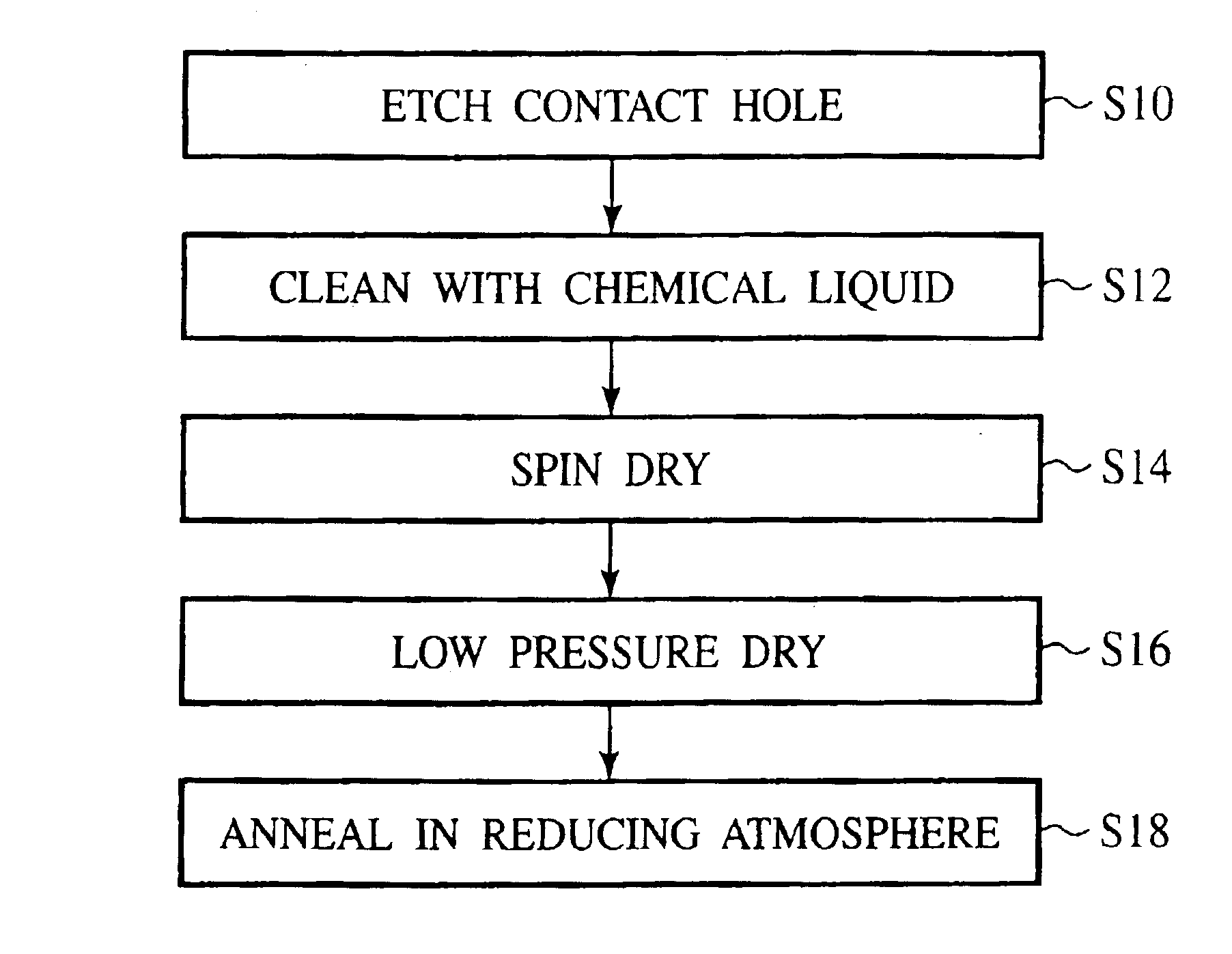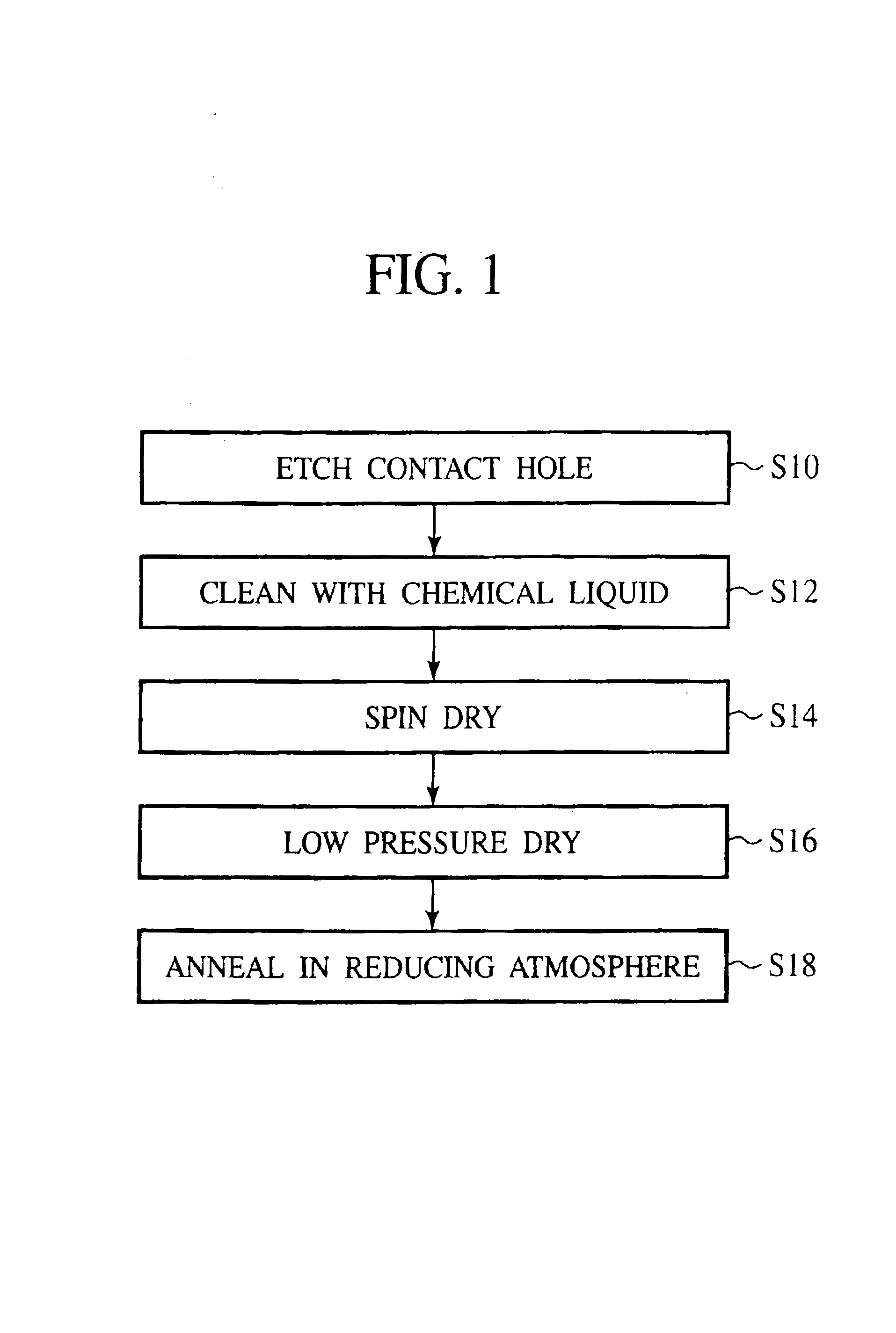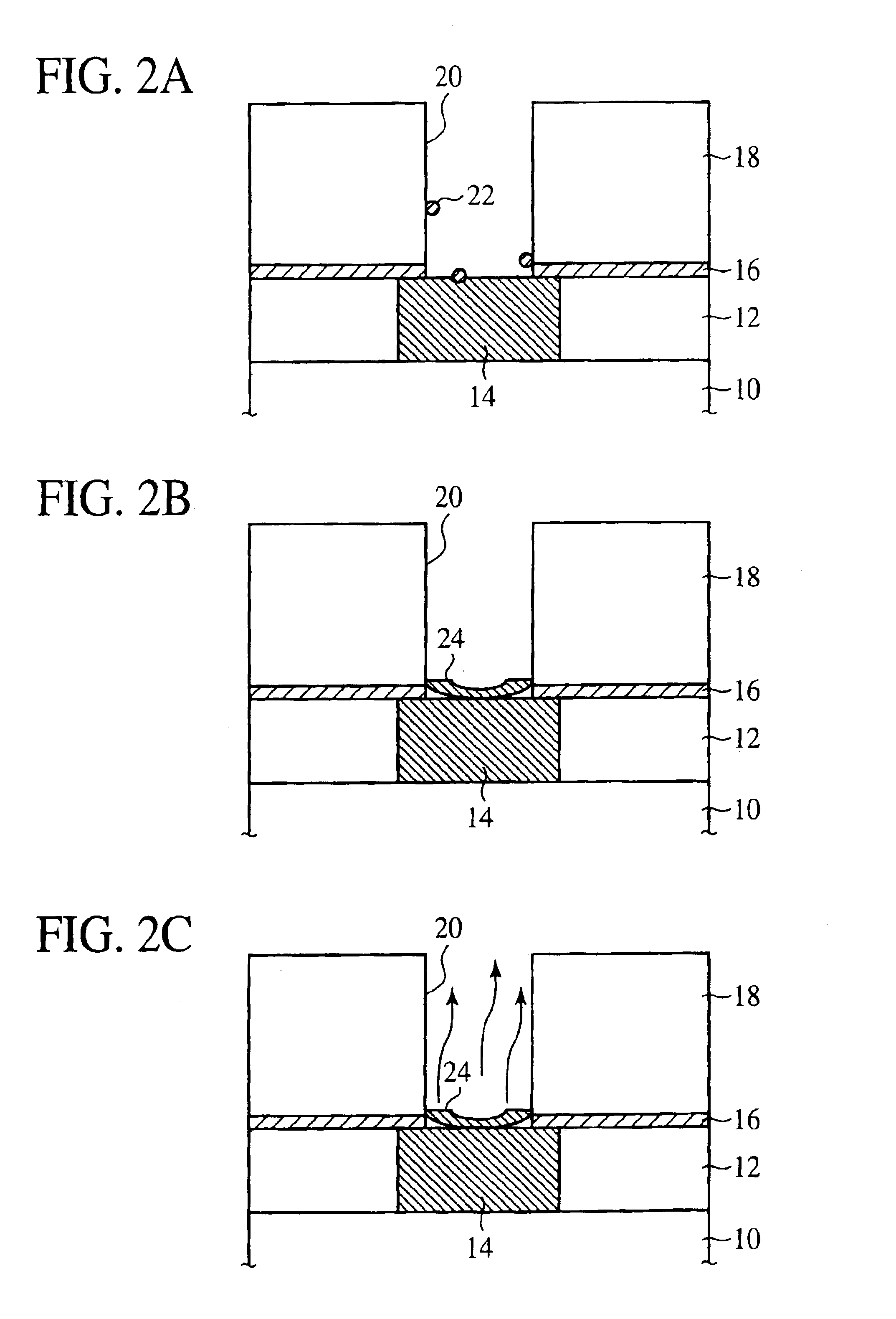Cross reference to related application
- Summary
- Abstract
- Description
- Claims
- Application Information
AI Technical Summary
Benefits of technology
Problems solved by technology
Method used
Image
Examples
Embodiment Construction
[0044][The Principle of the Present Invention]
[0045]First, the principle of the method for fabricating a semiconductor device according to the present invention will be explained with reference to FIGS. 1, 2A-2C and 3. FIG. 1 is the flow chart of the method for fabricating a semiconductor device. FIGS. 2A-2C are sectional views of the semiconductor device in the steps of the method for fabricating the semiconductor device according to the present invention, which explain the principle. FIG. 3 is a sectional view of the semiconductor device, which shows a void formed by the migration of Cu in annealing.
[0046]In the method for fabricating a semiconductor device according to the present invention, in the step of forming a Cu interconnection layer, as shown in FIG. 1, the step S10 of forming a contact hole in an insulation film down to the Cu interconnection layer by etching, the step S12 of cleaning with a chemical liquid, the step S14 of drying the contact hole by spin drying, the ste...
PUM
 Login to View More
Login to View More Abstract
Description
Claims
Application Information
 Login to View More
Login to View More - R&D
- Intellectual Property
- Life Sciences
- Materials
- Tech Scout
- Unparalleled Data Quality
- Higher Quality Content
- 60% Fewer Hallucinations
Browse by: Latest US Patents, China's latest patents, Technical Efficacy Thesaurus, Application Domain, Technology Topic, Popular Technical Reports.
© 2025 PatSnap. All rights reserved.Legal|Privacy policy|Modern Slavery Act Transparency Statement|Sitemap|About US| Contact US: help@patsnap.com



